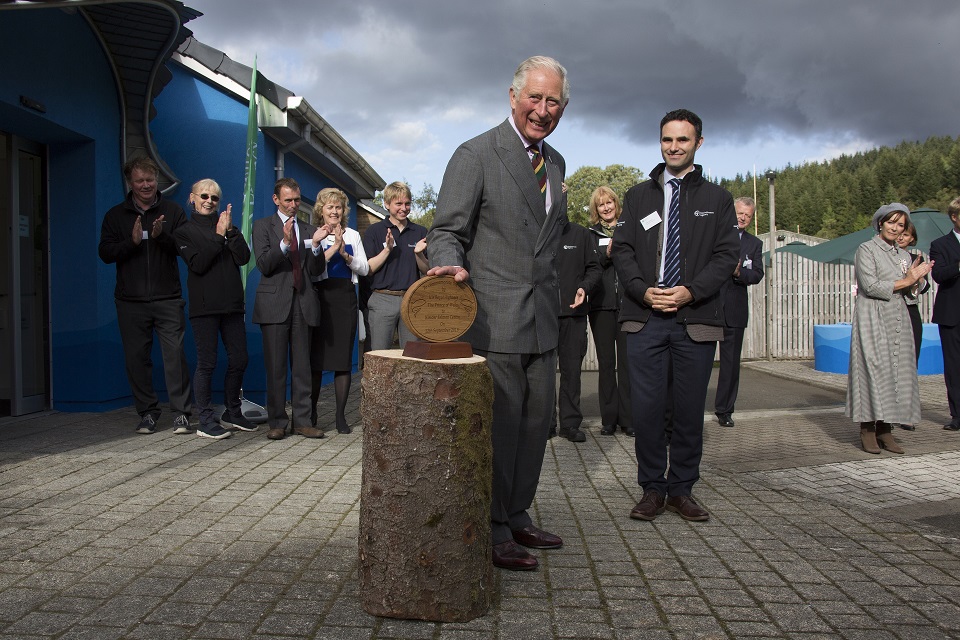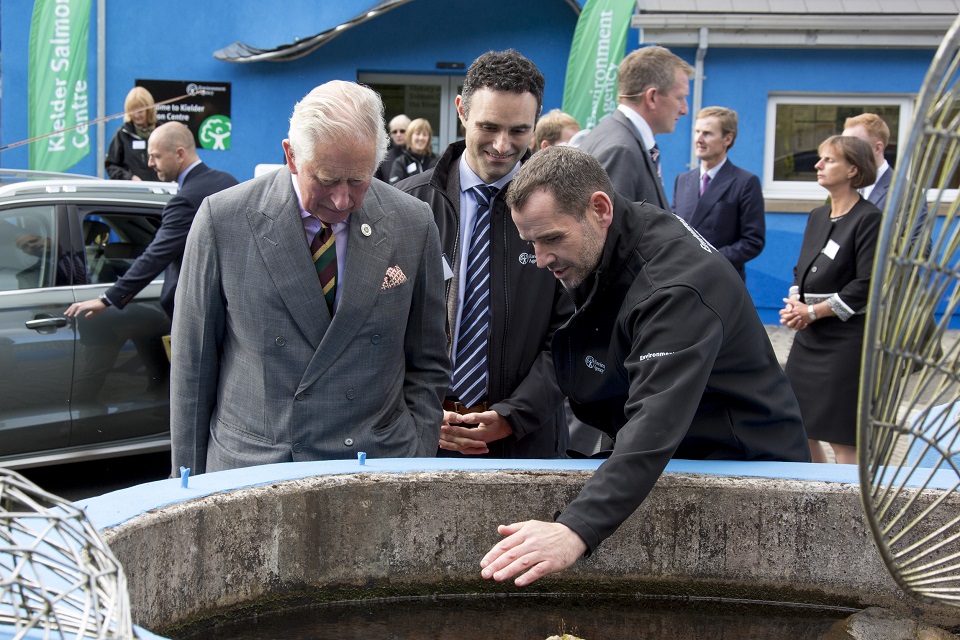Press release: Royal approval for Kielder Salmon centre
Kielder Salmon Centre rears and releases around 360,000 juvenile salmon into the River Tyne catchment each year.
It was built in 1978 to compensate for the building of Kielder Reservoir – the biggest man-made lake in Northern Europe – which cut off around 7% of the River Tyne catchment including some of the best spawning streams for salmon.
On Wednesday 12 September the Prince of Wales was given a tour of the facility, including the new £100,000 visitor centre which is due to open to the public later this month.
The three-month refurbishment has created a more interactive experience for visitors and allows them to get up close with the salmon and other species the centre aims to protect – including the critically endangered freshwater pearl mussel.
The new visitor centre includes:
- a natural North East river environment aquarium showcasing salmon and other local river species
- videos revealing the behind the scenes work at the centre to protect iconic species
- a prehistoric salmon fossil dig
- a quiz and brass rubbings to unveil interesting information about the salmon
- new and improved outside spaces and pearl mussel breeding beds
- a circular salmon walk around the local area

The Environment Agency’s Richard Bond, who has been Manager of Kielder Salmon Centre since 1995, said:
We were absolutely delighted to be able to show the Prince of Wales around our conservation centre which aims to protect this incredible, iconic fish.
We also explained the innovative work we are doing to hand rear one of the UK’s most endangered species, the freshwater pearl mussel, which is absolutely vital to our river systems and in great decline.
He was interested to hear about the improvements to the River Tyne, which has gone from a heavily polluted industrial river to one of the best salmon rivers in the country thanks to improvements to water quality and conservation efforts from ourselves and our partners.
The new visitor centre has a wealth of information about the aquatic life of Northumbria and is a great way for people to understand the fascinating world that lies below the surface of the river.
